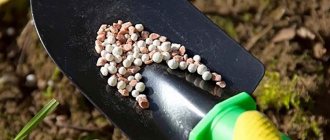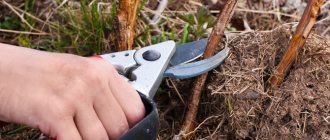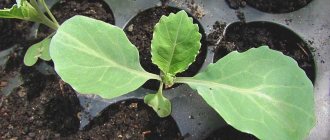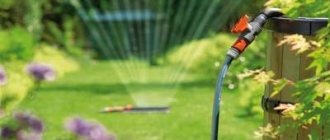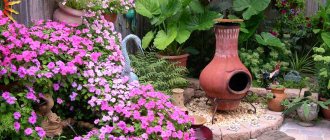In the middle of summer, when everything is in color and fragrant, many gardeners think about how and with what they should fertilize their garden to obtain the next harvest.
This is a very important question, which, however, is not a problem for experienced farmers. Only beginning gardeners, who often do not even have theoretical training, should think about this. After all, it is already clear that good soil fertilization is necessary for the future harvest. To get a good, high-quality harvest, you need to know well what additives are best added to the soil and when to do it.
It is absolutely clear to every farmer that fertilizing the land is necessary, since without it it loses its fertile properties. But there are two options for when to recharge the soil. If fertilizer is applied in the spring, it will help the rapid growth of plants with good harvest characteristics, while all fertilizers “work” only on the plants. This system is most often practiced in large agricultural enterprises focused on quick profits. For a private farmer who cares not only about profit, but also about his land, this option is not suitable; he will think about fertilizing the land only after harvesting. When fertilizing is applied in the fall, the soil itself is saturated and replenished with necessary microelements after the summer season. Autumn fertilizer is usually applied after September 15 and before the second half of October. Then the fertilizer is dug up along with the soil, and over the winter the soil is replenished with various useful microelements that were “sucked” out of it over the summer by the last harvest.
Many farmers do not limit themselves to growing annual crops; many plants are perennial and tolerate wintering quite well, especially if they are helped in this. Crops that remain in the ground for the winter must be fed with phosphorus fertilizers; potassium fertilizers can also be used. These additives strengthen the root system of plants, as well as their immunity, which is necessary for a comfortable wintering of these crops. When applying fertilizer in the fall, during the process of rotting, the soil will be filled with very rich microelements, and when fertilizing in the spring, all useful elements only contribute to plant growth, and nothing remains in the soil for the winter. This is one of the differences between soil fertilization in spring and autumn, so a novice farmer must accurately determine which type of soil fertilization is best for him to use.
Responsible step
Fertilizing in the spring is an extremely important agrotechnical procedure that provides a reliable foundation for the development of a luxurious flowering garden and vegetable garden, and guarantees the receipt of ripe, healthy fruits.
A deficiency of nutrient minerals in the soil causes many problems: plants weaken, often get sick and are unable to cope with difficult weather conditions. But it is also important to remember that an excess of minerals hides an even greater danger, both for botanical crops and for humans and the environment as a whole.
It is important to strictly follow the dosage of drugs and fertilizer application schedules, and in this matter, ready-made mineral complexes always win. It is impossible to calculate the exact amount of substances introduced with livestock products, because each farmer farms differently, and as a result, the component composition of the manure will be different. Ready-made fertilizers, which are offered by domestic and foreign industry, have a clearly regulated set of components in strict proportions, which will allow you to avoid mistakes with the dosage. So don’t be upset about the lack of organic matter, but let’s take a closer look at how you can fertilize the soil besides manure.
We add peat in the fall
Also, a good option would be to add a soil-improving substance such as peat to the beds in the fall. It has little effect on the saturation of the soil with nutrients (it contains only nitrogen in sufficient quantities, of which plants absorb only 3-5%), but, nevertheless, helps to improve the physical properties of the soil: it makes it looser, warmer, more porous, air- and moisture-permeable. The improving properties of peat are most clearly manifested on poorly cultivated sandy and heavy clay soils.
Only highly decomposed lowland peat is suitable for beds; high-moor and transitional peat are not suitable for these purposes.
If the soil is very heavy or depleted, it is best to apply peat twice - in the fall and in the spring. With autumn digging, add 4-5 kg of peat per 1 sq.m of soil, and in the spring, repeat the application of the same dose and carefully dig the ground again.
- Everything you wanted to know about organic fertilizers
No “chemistry”, only environmentally friendly fertilizers.
Options to choose from
Top dressings popular in gardening can be divided into three large groups:
- Natural organic preparations of natural origin - in addition to manure, these also include: compost, peat, wood ash, green manure and even banal green manure.
- Mineral complexes are one-, two- and multi-component compositions containing various macro- and microelements: phosphorus, potassium, nitrogen, as well as molybdenum, zinc, copper, iron, calcium, etc.
- Combined products that include both organic and mineral preparations, as well as a number of vitamin complexes, humates and humins, and other useful components.
Problem 7. The soil is contaminated with harmful insects and diseases
Insects, bacteria and harmful fungi do not sleep in the summer, populating the site at an accelerated pace. And they sleep in winter - including in the soil, so that next season they can start the battle with you for the harvest again.
What to do?
The easiest way to control insects overwintering on a site is to treat the soil with insecticides. Since a potential threat in the form of eggs and larvae of pests is most often hidden in the ground, the store needs to pay special attention to larvicides that destroy larvae and caterpillars, as well as ovicides that affect the eggs of insects and mites.
- Insecticides: instructions for using drugs against pests
Do you know what drugs can be used to control harmful insects in garden plots? We tell you how not to overdo it and ruin the harvest.
Mechanical methods of struggle will not be superfluous. For example, if you dig up the soil in the beds in late autumn (without breaking up the lumps), the pest larvae will become prey for birds. And some insects simply will not be able to burrow into the ground again and overwinter.
Experienced gardeners believe that if you sprinkle the soil with an EM solution when loosening, this will help weaken harmful bacteria.
It is also important to remove fallen leaves, as pest larvae often overwinter under them.
- Where do garden pests spend the winter and how can you fight them without chemicals?
Find out how to find wintering areas for pests and get rid of the “sleeping enemy.”
In order to cope with diseases, there are also a number of drugs. For example, Alirin-B is a beneficial soil microflora designed to suppress fungal diseases. The drug is compatible with many insecticides, biological products, plant growth regulators and fungicides.
- What are fungicides and what are they used for?
From the article you will learn why you need to treat plants with fungicides and how to apply them correctly.
Organic Substitutions
A clear advantage of using these substances is the ability to grow an absolutely healthy and environmentally friendly crop. When it comes to the question of how to fertilize the soil in the spring if there is no manure, the best substitutes are the following.
Compost is the most inexpensive and easiest way to replace mullein, but it is quite labor-intensive and time-consuming. The basis of the compost pit is layers of organic plant residues (tops, garden herbs, foliage, sawdust, peat bog), processed under the influence of beneficial microorganisms for 9-12 months. Periodic mixing of the contents of the pit (3-5 times per season), as well as the use of special catalysts such as “Compostin”, etc., will help speed up the maturation of compost. Ready-made compost is used during spring plowing, at the rate of 0.5-1 bucket per square plot.
Vermicompost is a product of the processing of organic residues by Californian earthworms. The process goes twice as fast as in a compost pit, while only 1 kg of the finished substance easily replaces up to 10 kg of manure.
Peat - this substrate itself contains practically no useful components, but adding it to the soil mixture in the garden and garden changes the structure of the earth, increases the breathability of the soil and improves the ability to absorb moisture. Peat will be an ideal component for crops that prefer slightly acidic soils: many fruit and berry plants, tomatoes, etc. Peat is also an integral part of the compost heap.
Sapropel (river silt) - is formed as a result of the decomposition of algae and inhabitants of fresh water bodies. The substance, rich in organic matter, is well suited for cultivating the garden in the spring, especially on sandy soils and sandy loams, since it has moisture-retaining properties and does not change the environment.
Eggshells are rich in calcium, which is important for the proper development of all plants. It is thoroughly washed, dried and crushed into fine grains, scattered around the tree trunks of fruit trees or poured into shallow trenches along future plantings.
Green fertilizer is an aqueous infusion of herbs (nettle, clover, calendula, potato tops, etc.), which is kept warm for 8-10 days, and then, diluted to a concentration of 1 to 5, used as root dressing and leaf fertilizer.
Wood ash is a good alkalizing component, rich in potassium. It has a dual function, being both a fertilizer and an insecticide. Spray the area in dry form (150-200 g per hundred square meters) or introduce it in dissolved form (the same concentration per bucket of water). Cruciferous crops (all types of cabbage) and berry crops respond well to fertilizing with ash.
Green manure is a natural source of nitrogen. Useful herbs (lupine, peas, clover, alfalfa, etc.) are sown along the row spacing, and before flowering they are mowed and spread as mulch.
We apply manure in the fall
First of all, in the fall it is worth adding manure to the soil for digging (ploughing). This versatile natural fertilizer is rich in calcium and magnesium, which help reduce soil acidity. Potassium and phosphorus are contained in manure in the most accessible form for plants, and nitrogen remains in the soil for a long time. Microorganisms contained in manure contribute to the formation of humus.
Digging requires approximately 2-3 kg of organic fertilizers per 1 sq.m of sandy soil, and more - 6-8 kg per 1 sq.m of clay soil.
How to apply manure in the fall? It is distributed over the surface of the soil and immediately dug up with soil to the depth of a spade bayonet (15-20 cm). Unlike the spring application of this fertilizer, when the manure must be rotted so that, due to the high content of uric acid and other aggressive substances, it does not burn young plants, fresh manure can be applied in the fall, since there is no longer such a danger. Over the winter, the manure will become saturated with moisture, mix well with the soil and begin to rot. The soil will become more loose and also fertile, since the accumulation of necessary substances in it will occur more actively, and the plants will be fed with microelements of the fertilizer gradually, over the next 6-8 months. Therefore, autumn fertilizing with manure is considered more useful than spring fertilizing. In addition, the weed seeds contained in the manure will sprout earlier after it is applied in the fall.
You can feed fruit trees and shrubs with manure in the fall, or apply it to future garden beds and greenhouses.
- Manure: how to use natural fertilizer to feed plants
Which manure is better, horse, cow or bird manure? All about the beneficial properties of the most effective organic fertilizer is in our article.
Mineral fertilizers for the garden in spring
It is easier to use ready-made drugs, because to calculate the correct dosage, you just need to follow the instructions on the package exactly. Before spring digging, you can apply any chemicals even in dry form, simply scattering granules (powder) over the field, followed by embedding the substances deeper.
The main active component for plants in the spring is nitrogen, as well as the potassium-phosphorus complex, therefore, in the question of how to fertilize the soil, in addition to manure, it is appropriate to add multicomponent fertilizers like “Nitroammofoska” or “Nitrophoska”, as well as one- and two-component mixtures: “Potassium Monophosphate” , “Diammofoska”, “Superphosphate” simple or double, “Precitate”, “Kalimagnesia”, potassium nitrate, as well as “Urea” (urea), ammonium nitrate, etc.
Special mixtures for specific crops are extremely popular: “Berry”, “For Tomatoes”, “Cabbage”, etc.
It is better not to use chlorine-containing preparations (potassium chloride, etc.) in the spring, since this element is not beneficial and contributes to a change in the flavor and aromatic complex of berries, melons, and potatoes.
Nitrogen will allow plants to actively gain green mass, because in case of deficiency of this element, any botanical crop stops growing, the foliage loses its green color, turns pale and shrivels.
Potassium will help crops strengthen their immunity, develop solid disease resistance, and survive droughts and frosts. In addition, the element improves the commercial properties of the crop, increases the sugar content of fruits and berries, and enhances the natural aroma.
Phosphorus plays a leading role in the formation of the root system, and is also important for the development of a powerful above-ground part of plants.
Mineral fertilizers are applied to the soil in advance, before digging or immediately at the time of planting seedlings or sowing seeds. The concentrations of the drugs differ, since spring plowing takes place 1-1.5 months before planting. As soon as the snow melts and the average daily air temperature is set at +5 °C, you can apply the following to each square of the site:
- 50-75 g phosphorus,
- 45-60 g potassium,
- 25-40 g of nitrogen.
To ensure 100% absorption of minerals, it is recommended to add substances in a special chelate form.
It is convenient to apply any other microelements in the form of foliar sprays on the leaf, for which the powder of boric acid (1-2 g per liter of water) or manganese (0.1-0.5 g) is dissolved and irrigated on each bush. Copper or iron sulfate is also used. At the same time, a dual approach is ensured: feeding and disease prevention.
How to fertilize the lawn and flower garden
Lawn
In order for lawn grass to survive winter normally, it needs nutrients. In the autumn, superphosphate will be the best choice for it. You need 50 g of granules per square meter. meter or 2.5-3 cups of bone meal for the same area. Plants like complex products with prolonged action. These are “Bon Forte” for lawn grass, “Fertika autumn lawn” and the like. They are applied in the first week of September, the doses are indicated in the instructions.
Ash is “shown” from organic matter. It contains about 30 micro- and macroelements necessary for lawn grass. It is sprayed over the lawn on a calm, sunny day. In addition, ash powder is an excellent absorbent. After spraying, it not only enriches the soil, but also absorbs harmful substances and fights moss.
- House plants
6 plants that should not be fed in autumn and winter
Combination drugs
In terms of how to fertilize the land other than manure, multicomponent organomineral fertilizers have proven themselves well.
“Agrovit Kor” is a humus-forming fertilizer containing organic matter (peat, brown coal, amino acids) and minerals (balanced set), which promotes accelerated growth and strengthens plant immunity, as well as improving soil structure. There are universal and specific series.
"Bona Forte" - fertilizers contain chelated forms of minerals, which are most easily absorbed by any botanical crops. The composition also contains vitamins and other vital substances.
"Fertika" - multi-component mixtures for the full development of plants of any species and varieties, which help increase productivity, ensure environmental safety and improve product quality.
It is always possible to replace manure, but it will hardly be possible to do without additional nutritional supplements. Each presented preparation differs in composition and ensures the effectiveness of plant development to a greater or lesser extent. It is important to strictly follow the breeding instructions and then you will be able to grow a truly luxurious garden and vegetable garden.
How to properly fertilize the soil
Autumn fertilization of the soil, as can be seen from the above, enriches the soil very well for the next year. After you have harvested the crop, you need to evenly spread (scatter) the additives over the area that you want to enrich with useful substances. After this, you need to dig up the fertilizer along with the soil so that it affects as thick a layer of fertile soil as possible.
There are many types, types and varieties of soil fertilizers. In this article we will look at organic fertilizers, which are the most accessible and, by their origin, have the most natural, so to speak, qualities. All these fertilizers are easy to obtain during farming; in essence, they are agricultural waste containing a lot of microelements necessary for cultivated plants.
Sometimes liming is required
Every few years it is worth checking the soil reaction (i.e. its pH) using an easy-to-use chemical field or electronic acid meter. Most plants grow best in neutral soil (pH 6.0–7.0). The exceptions are heather plants (azalea, rhododendron, kalmia, leukotoe, pieris, heather), as well as hydrangeas and magnolias, which grow well in acidic soil (pH 3.5–5.0). The reaction of the soil depends on the calcium content - the less it is, the more acidic the soil is (pH has a lower value). Because calcium is consumed by plants and also leached into the soil, its amount decreases over time (fastest in sandy soils), so it needs to be replenished. For liming, it is best to use chalk or dolomite, which contains magnesium (a lack of this element is quite often observed in sandy soil).
Application of black soil
High-quality fertile soil can be brought to the site. But is this really rational?
There are quite a few advantages, because if you cover heavy clay soil with a 20 cm layer of black soil, you will notice the effect already in the first year. But there are also many disadvantages of such an enterprise:
- Exhausted soil from suppliers, which at first glance cannot be distinguished;
- Mandatory financial costs for the purchase of material, as well as its delivery and layout throughout the site;
- Depletion of the soil and its leaching, decomposition within 3-5 years, that is, loss of primary positive qualities.
It is necessary to make accurate calculations taking into account the life of the chernozem, the gradual loss of quality annually, as well as indicators of increasing productivity. Often, the delivery of black soil to the dacha turns out to be irrational!
